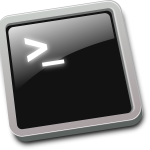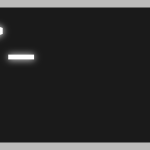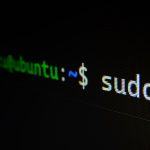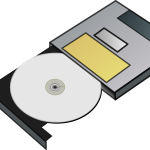Explore expert Linux tutorials, command‑line guides, and practical tips at Heatware. Master Linux commands, scripting, and open‑source tools with our in‑depth articles.
Linux Troubleshooting & Tips
How to Easily Change Screen Resolution Settings in Ubuntu
If you’re running Ubuntu 9.10 and want to tweak your display settings, adjusting the screen resolution is a quick fix. Whether you’re trying to match your monitor’s native resolution or just make things look sharper, Ubuntu 9.10 has tools to help you get it done. Let’s walk through the steps to change the screen resolution, … Read more
How to Disable Password Prompts in Ubuntu Easily
This article will show you are to disable UAC (User Access Controls) aka those pesky popup dialogs where you must enter your password in Ubuntu Linux! As many of you know, this feature was implemented in Windows Vista but went horribly wrong and is the reason it has been removed in Windows 7. Linux, which … Read more
Quickly Install SSHD on Ubuntu in Just A Few Seconds
Secure Shell (SSH) is a critical tool for Linux users, enabling secure remote access to servers and facilitating encrypted file transfers. Ubuntu, being one of the most popular Linux distributions, offers seamless compatibility with SSH. This guide will walk you through the steps to install, configure, and manage SSH on Ubuntu, ensuring secure and efficient … Read more
How to compare to files in Linux in 5 ways
Comparing two files in Linux is a common task, especially when managing configurations or tracking code changes. Let’s explore some straightforward methods to help you spot differences between files. Using the diff Command The diff command is a staple for comparing files in Linux. It highlights line-by-line differences, making it easy to identify changes. Basic … Read more
How to Generate MD5 Checksums and Validate a File in Linux [2025]
This article will explain how to generate a MD5 Checksum on a file or list of files on Linux and how to validate a file against a known checksum. We’ll give you easy-to-follow examples as well as explanations. Let’s get started! What is a MD5 Checksum? The MD5 checksum is a widely used cryptographic hash … Read more
How to Open and Extract .tar.bz2 Files by Example
If you’ve never seen a .tar.bz2 file before, don’t worry—it’s just a compressed archive used on Linux and Unix-based systems to save space. A .tar.bz2 file is created in two steps—first, a .tar archive bundles multiple files, then bzip2 compresses it to save space. This format is commonly used in Linux and Unix systems for … Read more
How to Install an FTP Server on Linux in 30 Seconds
If you’re looking to move files quickly and efficiently between systems, setting up an FTP server for Linux is a solid option. FTP (File Transfer Protocol) is reliable, widely used, and pretty straightforward to get up and running on Linux. Whether you’re managing a personal server or handling company data, an FTP server is a … Read more
Append Strings to a File in Linux: Beginner’s Guide
Appending data to files is a common task in Linux, whether you’re updating logs, adding configuration settings, or combining file contents. Linux provides several straightforward methods to append text or other data to an existing file. This guide will cover different tools and commands you can use for this purpose. Using the >> Operator for … Read more
RPM Installation on Linux: A Beginner’s Guide!
This guide will take you through the basics of RPM and show you how to install it on different Linux server distributions: Ubuntu, CentOS, Fedora, and Red Hat Enterprise Linux (RHEL). In the Linux space, mastering the art of installing, upgrading, and removing software packages is crucial. These tasks are generally handled by what’s known … Read more
How to List Installed RPM Packages on Linux
This article will show you to how to list of all installed RPM packages on Linux distributions like Ubuntu, CentOS, RHEL, and Fedora. We’ll show you how to solve this using the rpm and dpkg commands. RPM (Red Hat Package Manager) is used by distributions such as CentOS, RHEL, and Fedora for package management. Ubuntu, … Read more
How to Use the Tail Command in Linux to Watch File Changes
This article will show you how to use the tail command to automatically view data that is appended to a file. This is particularly useful when you want to view the progress of some process from a log file. For example, if you want to see when the Apache server has finished loading, instead of … Read more
Learn How to Create and Manage Symlinks in Linux Easily
What exactly are Linux symlinks, and why do they matter? Essentially, a symlink, or symbolic link, acts like a shortcut. It points to another file or directory, offering quick access without duplicating data. What are the Benefits of Symlinks in Linux? Managing symlinks in Linux can significantly enhance your workflow. Here’s how: How to Create … Read more
8 Easy Ways to Check Physical RAM in Linux Systems
If you’re using Linux and need to check your RAM size, there are plenty of simple ways to get the information. Whether you’re troubleshooting performance issues, checking compatibility for new software, or just curious about your hardware, these methods will help you out. In this guide, we’ll walk through several ways to check your system’s … Read more
Find the CPU (processor) speed and model under Linux
Checking your CPU’s speed and model in Linux is quick and easy. Whether you need this info for troubleshooting, performance checks, or system upgrades, Linux provides simple commands to get the details. This guide covers multiple ways to find your processor’s model name, clock speed, and other key specs using built-in tools. Why Check Your … Read more
Tar in Linux: Archive and Extract Files Easily
If you’ve ever worked with Linux, you’ve probably come across tar archives at some point. They’re super handy for bundling and compressing files, but if you’re new to Linux or just need a refresher, figuring out how to extract those files can feel a bit daunting. Don’t worry—I’ve got you covered! In this guide, I’ll … Read more
How to Count Files in a Directory in Linux (Quickly)
Ever needed to count files in a directory but didn’t know the best way to do it? Whether you’re trying to manage disk space, verify backups, or just get a quick overview of your files, Linux gives you plenty of ways to get the job done. Some methods are super quick, while others work better … Read more
Bulk Rename File Extensions in Linux Using Shell Commands
Renaming file extensions in Linux is a common task, especially when handling large numbers of files in web development, data processing, or system administration. Whether you’re standardizing file formats, converting image types, or preparing files for a batch process, the command line offers a fast and efficient way to rename file extensions in bulk. This … Read more
Mount ISO Files on Linux: A Beginner’s How‑To Guide
Ever downloaded a Linux installation image and wondered what to do with it? That’s where mounting ISO files on Linux comes in. An ISO file is a snapshot of a disk, like a CD or DVD, packaged into a single file. By mounting it, you can access its contents without needing any physical media. Whether … Read more
Find large files on Linux: 5 Command-line Examples
Running out of disk space on your Linux system? Don’t panic! Tracking down those massive files hogging your storage is simpler than it seems. Here are five practical command-line examples to help you identify and manage large files efficiently. 1. Using du and sort Together A quick way to find the biggest files in a … Read more
















